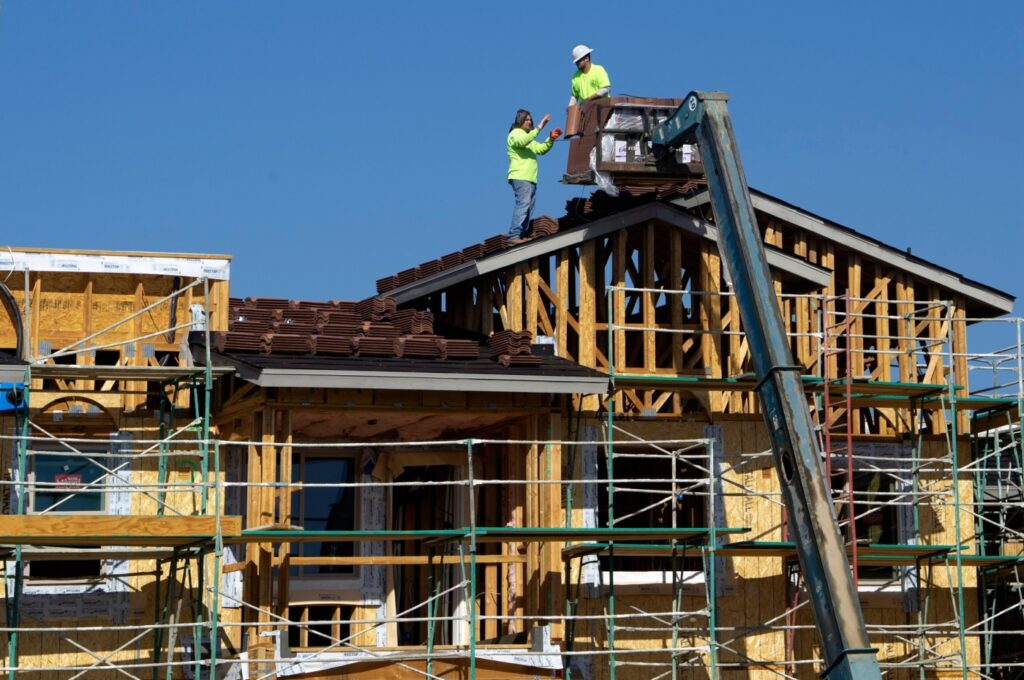
At long last, housing prices in Southern California are coming down. According to recent data, home prices fell by $10,000 between May and June. But with median home prices skyrocketing from $679,000 to $760,000 between June 2021 and 2022, the news likely came as cold comfort for those unable to afford a home.
Even with the recent dip, housing costs in the Golden State are at all-time highs, a crisis that has kicked homelessness into overdrive and forced an estimated 173,000 Californians to leave the state.
If these issues were merely a hangover from the pandemic-era surge in housing demand, there might not be much reason to worry.
But the truth is that Southern California is unaffordable, stagnant, segregated and sprawling by design.
As I argue in a new book, “Arbitrary Lines: How Zoning Broke the American City and How to Fix It,” many of our region’s great problems were the inevitable result of a century of bad zoning policy.
Take housing affordability: According to data provided by the Census Bureau, metropolitan Los Angeles permits housing at one-fifth the per capita rate of metropolitan Houston. And it isn’t all just sprawl:
Last year, Los Angeles permitted roughly the same number of apartments as Houston, despite being far larger.
Why?
Unlike Houston, Los Angeles has some of the strictest zoning laws in the nation, including making it illegal to build apartments in 75% of residential areas.
This is especially true in the most high-opportunity areas of the region.
For all the technocratic gloss layered onto zoning, arbitrary rules like minimum lot sizes force the construction of fewer, more expensive homes, effectively allowing the state to segregate cities based on income. And for all of Southern California’s egalitarian ambitions, these segregationist laws are still on the books and enforced across the region.
Or take traffic: If prices are any indication, many Californians might like to ditch their car and live in walkable neighborhoods. Yet in nearly every municipality in Southern California, it’s illegal to build shops without a parking lot or apartments without a parking garage, even in areas where transit is easily accessible. As UCLA professor Donald Shoup has convincingly argued, these mandates can add as much as $80,000 to the cost of a new home, all while adding to the region’s traffic woes.
Worse yet, by not zoning for new housing near job centers, we’ve effectively driven a kind of modern exodus to the desert. As posh, jobs-rich municipalities like Beverly Hills and Coronado lost population over the past decade — a function of their uniquely strict zoning rules — virtually all of the growth in the region occurred in far-flung exurbs in the Mojave. As a result, Southern California is now the national leader in grueling, 90-minute “supercommutes.” At a certain point, why not just move to Nevada?
Related Articles
Vin Scully’s passing leaves us speechless
Putting local governments on notice about taxation
Why are there so few homeless people in Western Europe?
The disastrous story of Eric Garcetti’s ambassadorship nomination drags on and on
Takeaways from Heather Mac Donald’s recent crime talk in Orange County
If there’s a silver lining, it’s that these destructive zoning policies are a choice. Over the past few years, cities like San Diego have scaled back onerous parking mandates, reforms that could soon apply across California if policymakers pass AB 2097. Indeed, thanks to statewide reforms, accessory dwelling units (ADUs) — or extra units tucked away in former garages or attics — have been legal across California since 2016. These ADUs now account for one in every four homes built in Los Angeles.
These reforms mark important progress, reining in the worst excesses of zoning. But why not take it a step further? The California Dream isn’t quite dead yet, but if we are going to keep it alive, it’s time for deeper conversations about what we want out of city planning. In a state as big and complex as ours, there are few policy panaceas. But if we want to build an affordable, thriving, integrated and sustainable Southern California, moving beyond zoning wouldn’t be a bad start.
M. Nolan Gray is the research director for California YIMBY and a professional city planner. He is the author of “Arbitrary Lines: How Zoning Broke the American City and How to Fix It.”
